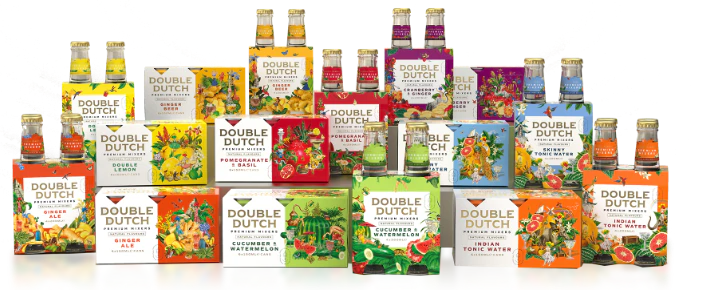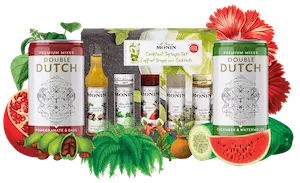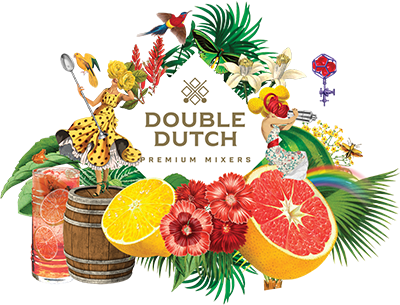How is Tequila Made: What You Need to Know About Tequila
Tequila - ancient, uniquely Mexican, completely plant-based and utterly delicious. Our deep dive into the history of tequila became deeper than we expected when we discovered that it could actually be the oldest spirit in production. Pulque - tequila’s predecessor - was being made as early as 150 BC; that’s before the Aztec civilisation even existed. It’s mind-boggling to think that way back in pre-history, the Mexicans had their priorities so right that they were creating spirit-based drinks.
From the heart of the agave
So many things make tequila unique, but one is the fact that it’s made from the heart of the Weber azul (blue) agave. Unlike almost every other spirit, when tequila is produced it comes from a slow-growing plant that is completely destroyed in the production of the drink, unlike most other spirits which either come from plants that grow annually: potatoes, corn, wheat, or plants that can be harvested for decades: grapes, plums cherries.
Agave Growth and Harvesting
That agave also has to be grown in one of five Mexican states, if it’s not from one of these states, it’s not genuine tequila. Those five Mexican states are:
- Guanajuato
- Jalisco
- Michoacán
- Nayarit
- Tamaulipas
The agave is harvested by a jimadore; a specialist farmer who can assess exactly when each agave plant is ready to be harvested, some time in their 7th to 14th year of growth.

Credit: Los Muertos Crew
Agave Piña
The plant is stripped of its leaves until just the heart, called the agave piña, remains. Yup, that’s piña as in Spanish for pineapple, because when you cut the leaves from an agave, it looks like a pineapple on steroids, about as big as your torso. In one of those twists that makes tequila so distinctive, the piña are generally transported between the rows of agave by donkey; about four piña per donkey-load, Cute or what?

Credit: Los Muertos Crew
Steaming The Piña and Distilling
The piñas are steamed for up to 56 hours, so they soften and then they’re crushed and the agave juice they give off is fermented to produce an alcoholic liquid called mosto, which is then distilled to produce the final product, tequila. It has to be distilled at least twice to remove impurities and concentrate the alcohol to a minimum of 35% ABV, after which it may be aged in a range of oak barrels including an american white oak barrel. The fermentation process of the production of tequila can also be blended or simply bottled.
To the bottom of your glass
Another thing that makes tequila so special is its flavour profile which should be earthy and vegetable-like, with a hot sugar top-note that’s often compared to a roasted marshmallow, and which is uniquely produced by a fully mature agave. Premium tequila is 100% Weber azul agave, but other mescals may use molasses, vanilla or corn syrup to simulate that glorious sugary taste.
Tequila Variations
But there’s more…. Tequila comes in different varieties:
Blanco Tequila which translates as white, is the ‘purest’ tequila, it’s clear and un-aged and usually it’s bottled immediately after distillation. This is the most commonly drunk tequila outside Mexico and it’s what we use in cocktails like margaritas - we’ll be coming back to the margarita later, so hold that thought.
Joven
which translates to young man, is a blend of a blanco with an aged tequila to give more depth . Joven is also called Oro, or gold, which tells you how this tequila looks in the bottle.
Reposado
if you’re in Mexico and ask for tequila, this is what you get served. Resposado means rested, and it’s a tequila that’s been in an oak barrel for anything from two months to up to a year.
Añejos Tequila
Añejos (old) and extra añejos (vintage) are tequilas that have been aged for a year for añejos and three years of aging minimum for extra añejos, in an oak container that must be no bigger than 600 litres. Both these tequilas are darker and much more complex in flavour, and used as a sipping spirit rather than a cocktail base.
Tequila or Mezcal
Okay, we’re going to do some de-mystifying here:
Tequila is Mezcal
Every tequila is also a mezcal, because mezcal is simply the term for any spirit distilled from agave. However, tequilas are made only from Weber azul, while mezcal can be made from any agave plant. The mezcal agave is often charred before being crushed to create the smoky flavour, which is different to the sugary hint of genuine tequila.
The Worm
The ‘worm’ in a mezcal isn’t a worm and isn’t part of Mexican culture. It’s a larvae called a gusano de maguey and if it weren’t drowned in spirit, it would have become a moth. It was definitely a marketing strategy in the USA, to help mezcal establish a brand identity separate to tequila.
There’s a couple of angles to this: a - the gusano helps demonstrate purity because a strong, ‘pure’ mezcal will have an intact, well-preserved larvae, and b - eating the ‘worm’ gives the eater virility or good fortune.
Tequila myths and facts
Tequila is made from cactus - False
Agave is a succulent, more closely related to asparagus than cactus
Tequila is a healthy drink - True
Tequila has fewer calories and less sugar and calories than many other spirits. It’s also less processed than most forms of alcohol. During the 1918 Spanish flu epidemic, patients in the USA were advised to drink tequila with salt and lime (hence the popularity of the Margarita) and while it’s not a flu cure, it can help soothe a sore throat while the lime is likely to boost your immune system.
Tequila makes you crazy - False
This one came about because back in the 1950s, when tequila became popular in the USA, people who were meeting it for the first time confused mezcal with tequila and then confused mezcal with mescaline - the mood-altering drug similar to LSD. And, as so often happens, it became a self-fulfilling prophecy - people felt like they could act crazy if they drank tequila, and so they did act crazy, but that’s because they wanted to, not because tequila made them do it.
Tequila can help you lose weight - maybe True
It’s a fact that tequila (and mescal) contain agavins, indigestible sugars that not only move through the body without being used to create energy, but also seem to stimulate the metabolism, unlike other alcohols which slow metabolic processes.
Tequila shots are traditional - False
Shots are fun, and the whole salt and lime thing is showy, but it’s not traditional. In Mexico, tequila is often just sipped or drunk with sangrita, a blend of of citrus juices, tomato juice and sometimes hot sauce which is used to cleanse the palate between sips of tequila. And as tequila has 600 different aromas, including almond, butterscotch, chocolate, citrus, floral notes, honey, mint, oak and vanilla, it’s a bit of a shame not to savour them all.









